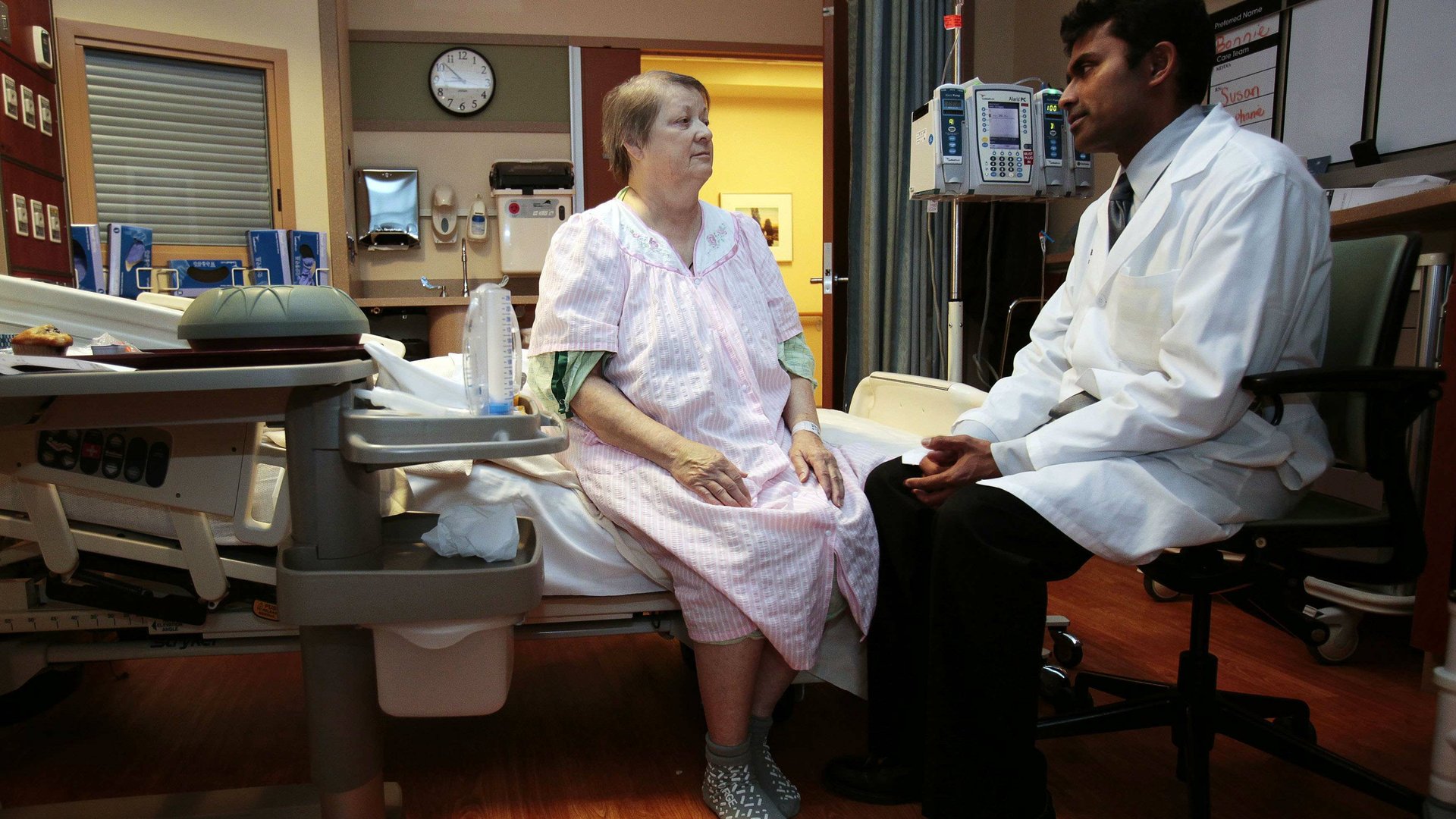Technology can’t take the place of a doctor who listens to you
Data are everywhere. But in medicine, data aren’t everything.


Data are everywhere. But in medicine, data aren’t everything.
From online symptom-checking websites to web-based professional medical resources, both patients and practitioners are able to answer many of their medical questions with the click of a mouse or touch of a screen. For those questions that require further investigation, new laboratory tests and high-tech medical imaging can help support (or refute) potential diagnoses.
Yet some diagnoses fall through the cracks of these modern investigative tools.
For example, a patient who walks in with abdominal discomfort and irregular bowel habits may ultimately walk out several visits later with a diagnosis of Irritable Bowel Syndrome (IBS)—a gastrointestinal disorder that may affect up to 10% of the global population. This syndrome is typically not associated with any abnormalities on x-rays, invasive procedures, or lab tests.
Similarly, a patient might present to an emergency department (ED) with acute sweating and chest pain, convinced he is having a heart attack, when he may be suffering from another, less-deadly type of attack—a panic attack. Panic disorder has been implicated in one study as being associated with up to a quarter of all patients presenting to the ED with chest pain. Yet the condition requires minimal imaging and blood work to diagnose; it’s mostly based on the patient’s medical history, current story, and clinical exam.
In my own outpatient practice, I see many cases that require little-to-no use of the wide array of medical technology available for order. But occasionally, I’ll feel the unspoken question by patients receiving these diagnoses—are you sure I don’t need further testing?
More imaging is not always better
Advancements in medical imaging and blood diagnostics have certainly improved the ability to detect life-threatening medical conditions. However, the increased use of this armamentarium of technology has not always stayed proportional to its ability to save lives. For example, a retrospective analysis published in JAMA a few years back suggests that the higher use of advanced imaging for patients presenting to the emergency department with injury-related conditions did not correlate with a similar rise of injury-related, life-threatening diagnoses.
Simply put, more does not always equal better.
Patient preference, medico-legal concerns or simply convenient reassurance may move a subset of clinicians to order labs and x-rays that are just a click away; but performing tests that are not indicated often leads to more harm than good.
Ordering imaging such as computer tomography (CT) scans for migraine headaches illustrate this challenge. Performing head scans for typical migraine syndromes often produce a very low yield in clinically relevant findings (0.6% in one retrospective study, 0.9% in another prospective trial), so this diagnosis is commonly made based on a patient’s history and exam. Yet the high incidence of head imaging used for migraines visits (almost 10% in an observational study conducted this past year) suggests an epidemic of over-use. This is concerning, as needlessly ordering a CT scan costs anywhere from several hundred to several thousand dollars and exposes the patient to unnecessary radiation.
Symptom-checkers can be wrong
In the face of a recent investigation demonstrating poor accuracy in online symptom-checkers, many symptomatic patients will continue to come to a medical office with a list of potential diagnoses provided by these virtual medical resources. In this audit study of 23 symptoms-checking websites, the correct diagnosis of standardized patient vignettes were only found in their top 20 diagnoses around 58% of the time. Given that several symptom-checker websites have the ability to suggest the need for lab tests or imaging, it sets these tech-savvy patients up for confusion and frustration when their clinicians recommend against further work-up after making their own expert diagnosis.
Where the use of diagnostic technology lies mostly in the hands of medical providers, patients may soon come in to the doctor’s office with blood work they independently collect from outside laboratory facilities. The incorporation of this data to the physician suspecting a clinical diagnosis might not only be superfluous, but may also result in even more costly and potentially harmful workup based on the results of the tests.
Data can’t replace medical professional opinion
In the end, data doesn’t “prove” the existence of disease but rather lends additional evidence toward a reasonable diagnosis. It is important for patients to recognize that not all justifiable diagnoses will be backed by objective data. In turn, medical providers should be prepared to properly communicate the concept of a clinical diagnosis and be ready to have an ongoing dialogue when treating and re-evaluating such cases.
Despite the fact health technology is having a moment, where fast and furious medical labs and imaging centers are on-demand, both patients and providers must realize that while data are everywhere, data aren’t everything.
You can reach Brian here or on Twitter @briansecemskymd.